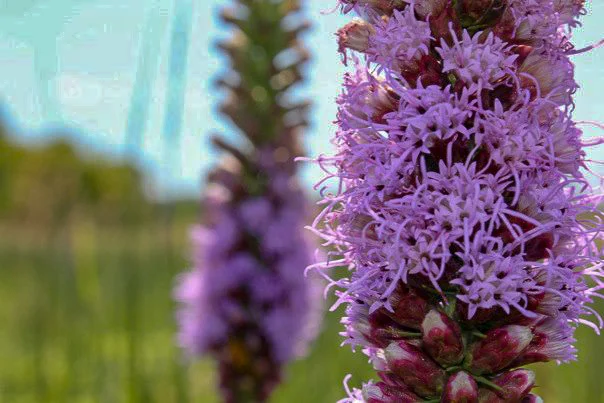Time is Essential in Establishing a Prairie
Project: Conservation Prairie Restoration
Land Type: Degraded Pasture
Years to completion: 5 years
Project Outline: Budget, preferences & goals (expectations)
Most prairie restorations occur like this: 1) Kill existing vegetation late summer 2) Burn Early Fall 3) Seed late fall 4) Begin management early spring around the newly planted seedlings.
This mostly occurs due to project budgets, time and the expectation to be an instant turn around.
However, as most prairie managers will tell you, it’s not nearly this simple.
Exploring the Unknown
There are many variables that go into prairie restorations. As a restorationist, it’s your job to understand the nuances of how a tract of land will transform into your project goals. If the project is a degraded pasture, it means there wasn’t much management done besides grazing potential and a lot of invasive plants will most likely be present.
When looking at the site, it’s always a good idea to take a step back and asses the surrounding land. What plants do you see growing in the ditches and on the side of the road? Even if the plants aren’t in the area you’re looking to plant in, they’ll likely end up in your planned restored area.
Another area to consider is the seed bank. A seed bank is the collection of seeds plants have dropped throughout the years. Some seeds remain viable for decades and thousands of weed seeds can be found in each square foot of soil.
Determining the seed bank is both difficult and essential. As previously noted, when a prairie restoration begins, a mass kill of the existing vegetation occurs and fire is then introduced to clear the land for seeding. However, this isn’t as simple as it sounds.
Fire & Seed bank
When fire runs through vegetation, it stimulates the seed bank. This promotes growth of undesirable plants the following growing season.
When determining seed banks, consider these factors of plants currently present:
Do they possess long viable seed timeframes?
Will they be stimulated by fire (some plants more than most)?
Are they difficult to eradicate (long tap-root, extensive root systems)
Going back to the quick turnaround scenario of Kill-Burn-Seed-Manage, with the knowledge of the effects fire has on seed banks, why risk battling non-desirables within your newly planted seedlings?
Is it worth spending an extra year on management before you seed with your prairie mix? Yes!
A Time-Centric Approach to Prairie Restoration
With this approach, instead of seeding the entire prairie mix year 1, you’ll now wait until year 2. **Seed mixes will be one of the more costly items purchased throughout the project** Seeding will still occur in year 1, but it will be composed of a more soil establishment mix, heavy on annuals.
This management scenario would now look like this: Kill-Burn-Seed (annuals)-Manage-Kill-Burn-Seed (prairie mix)-Manage
This allows for two cycles of burns to help exhaust more of the seed bank while prepping the land for an easier management schedule around your prairie seedlings in year 2.
Conclusion
The field of prairie restoration isn’t a glamorous one – it’s difficult work in sometimes challenging conditions and results are not immediate. And that’s OK. Because prairie restorationists, when a prairie restoration is done correctly, and you step into a self-maintaining ecosystem that explodes with color and supports a plethora of ecological activity, it makes it all worth it.




